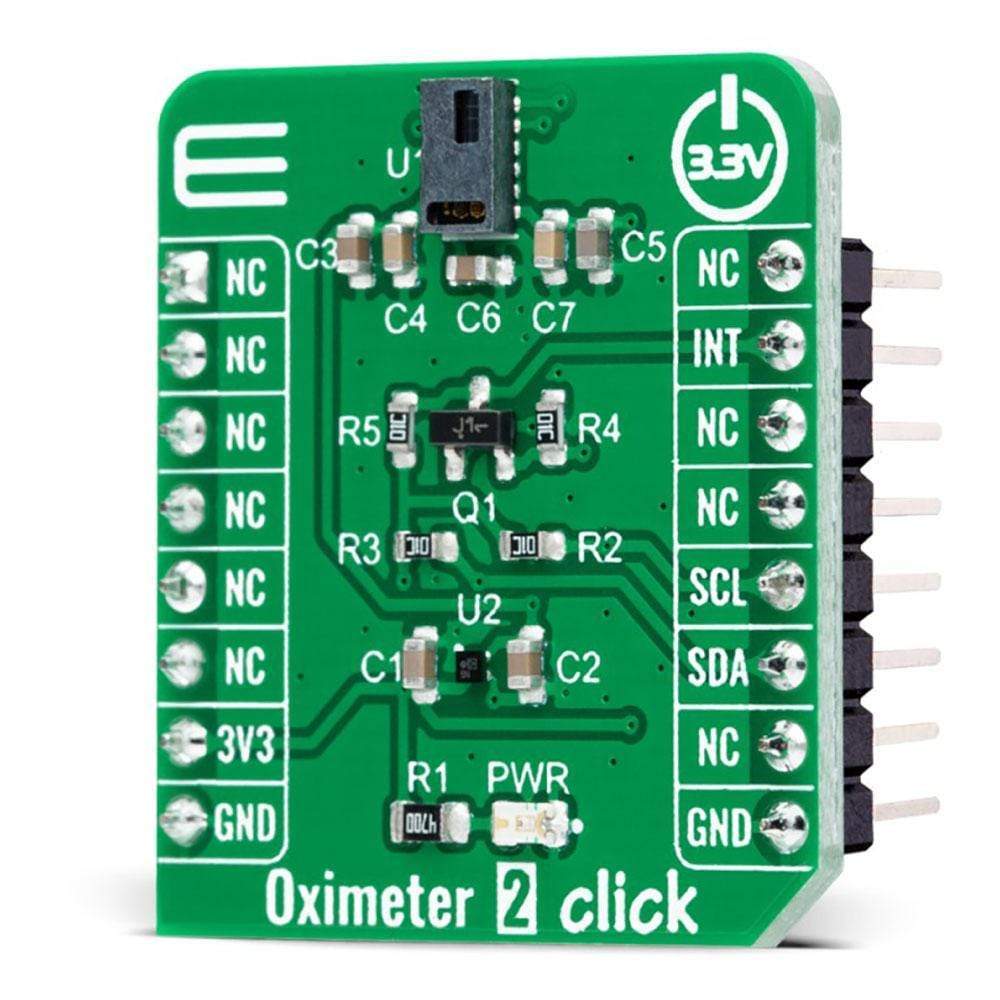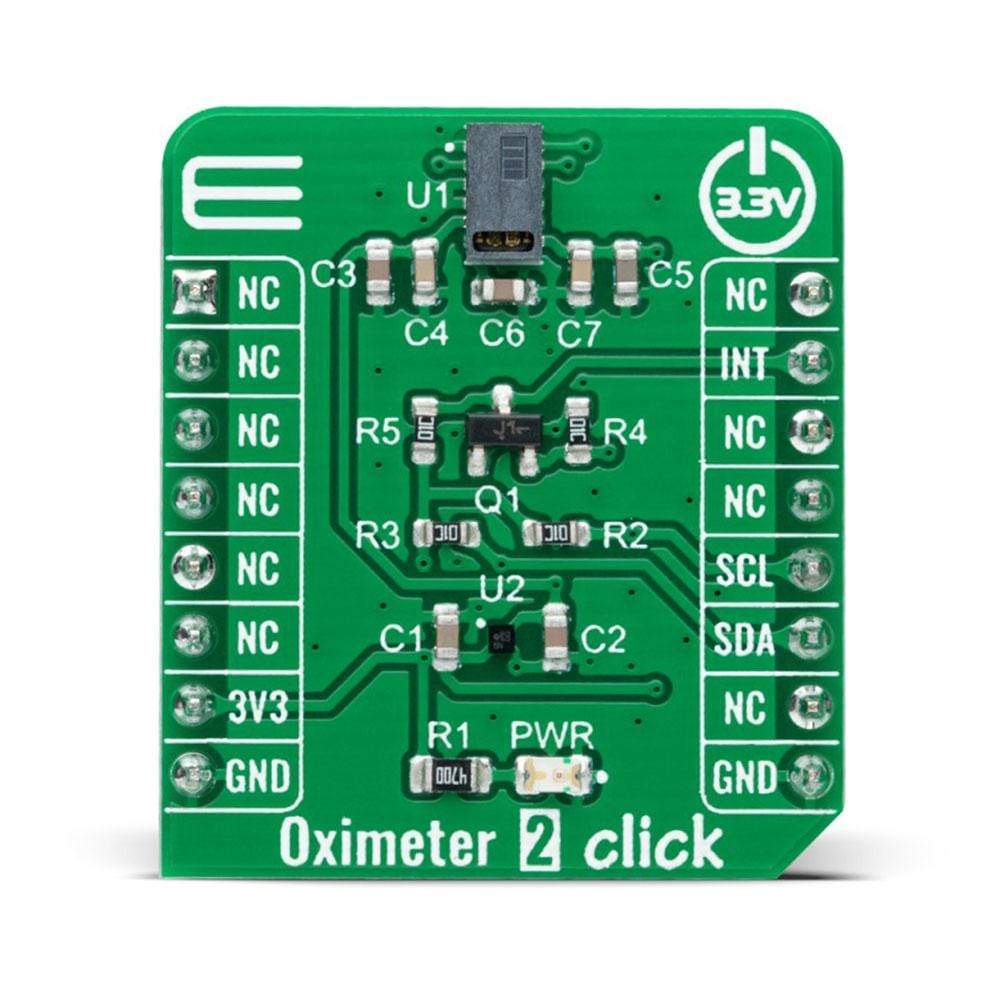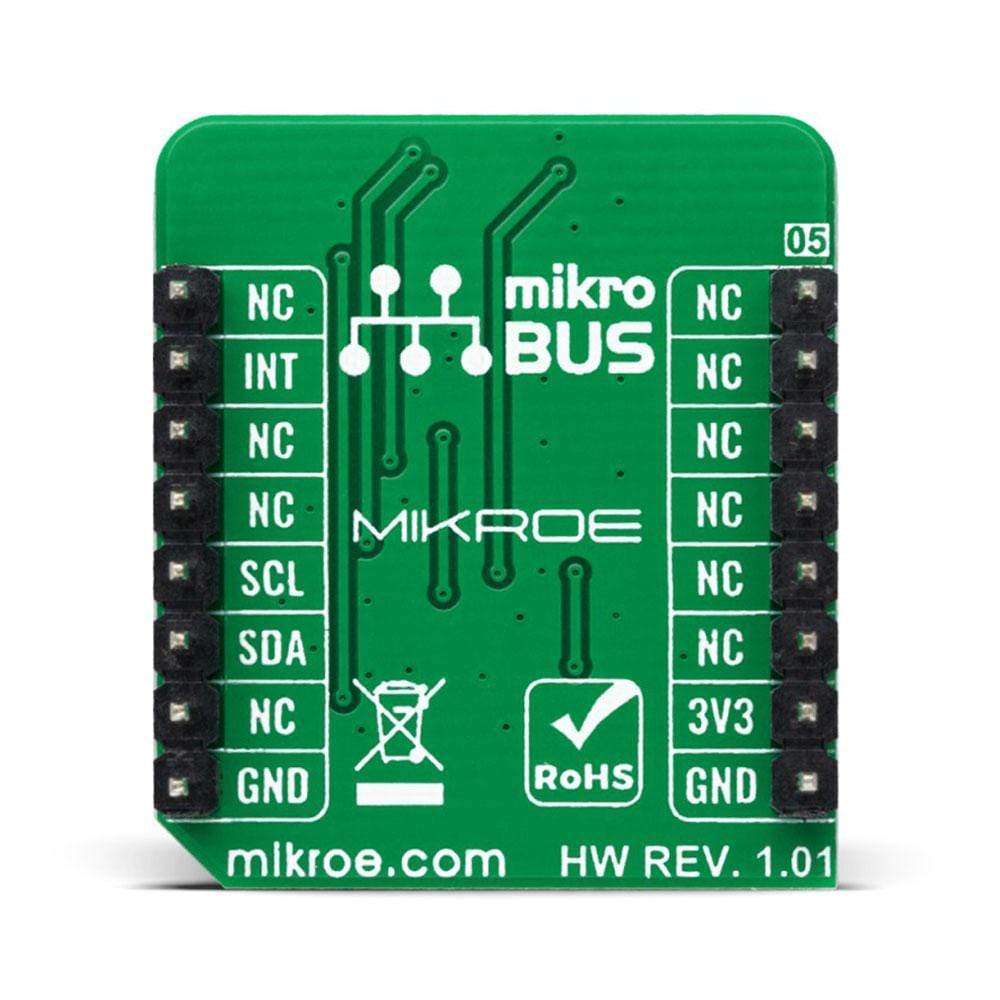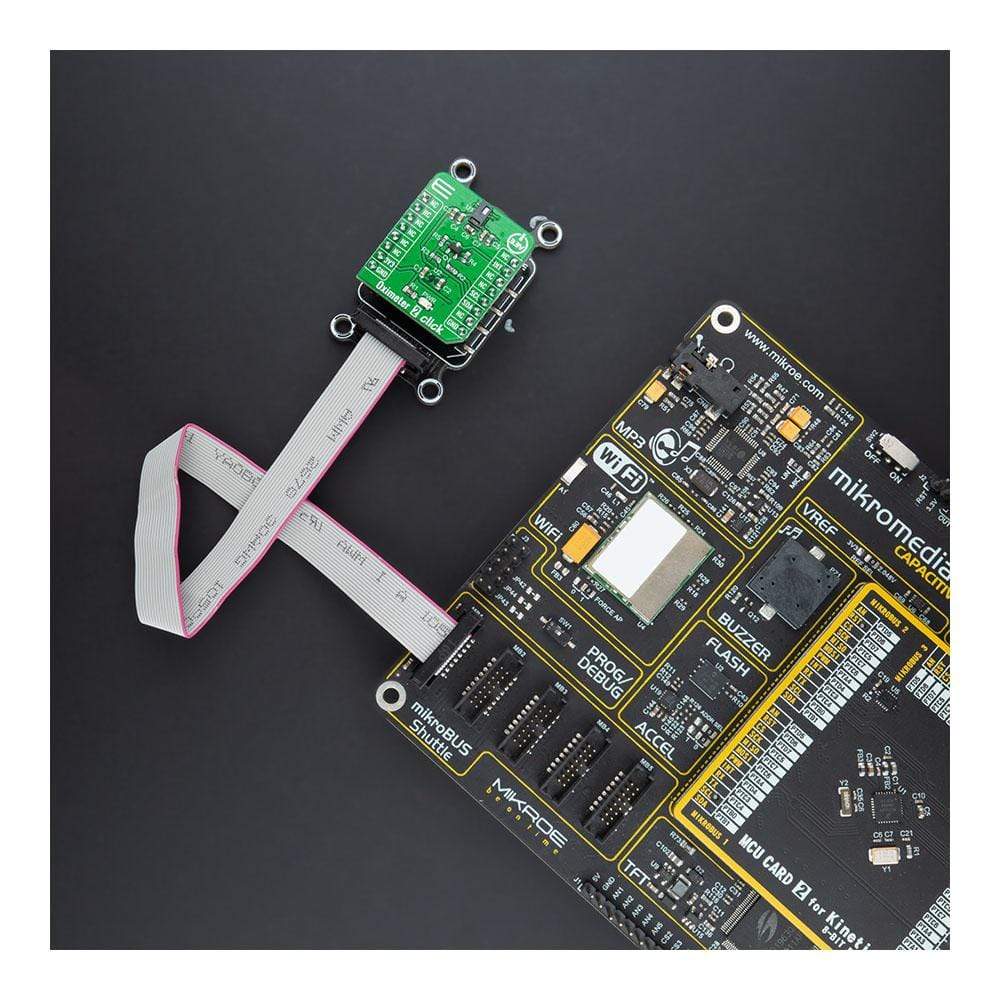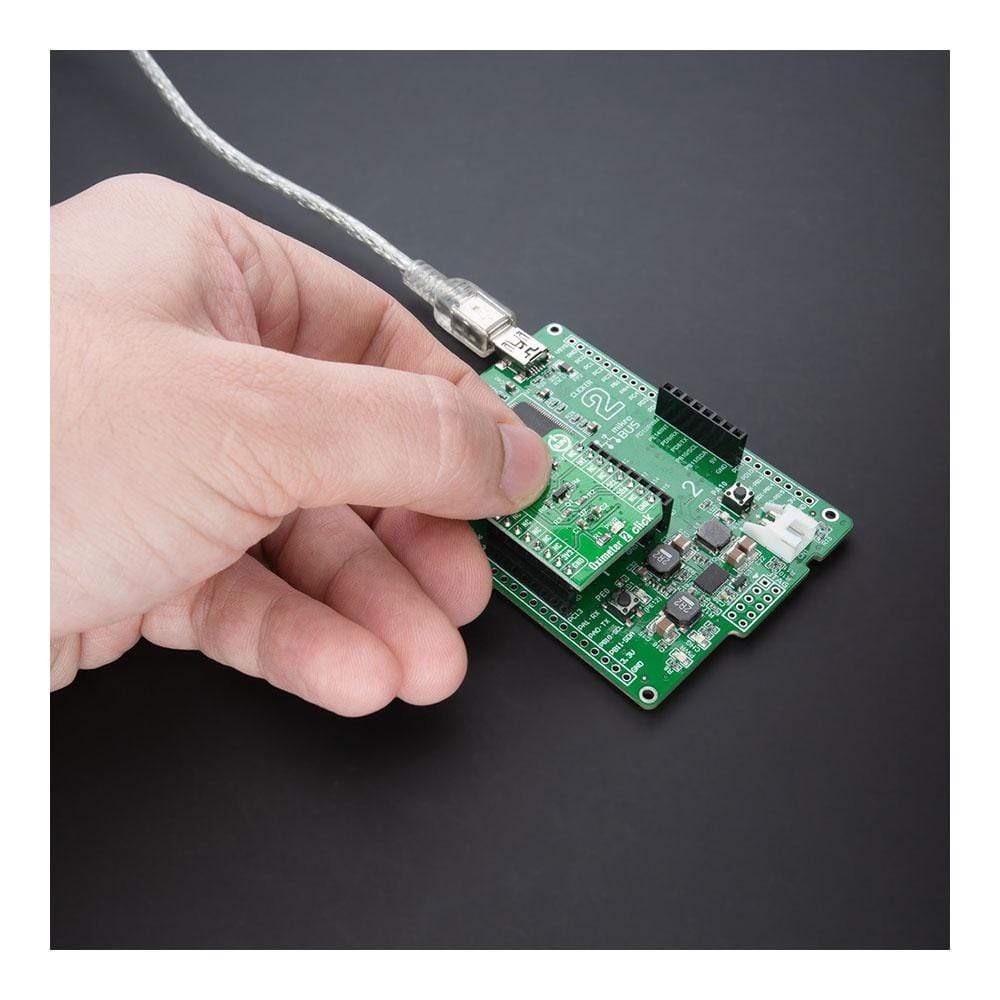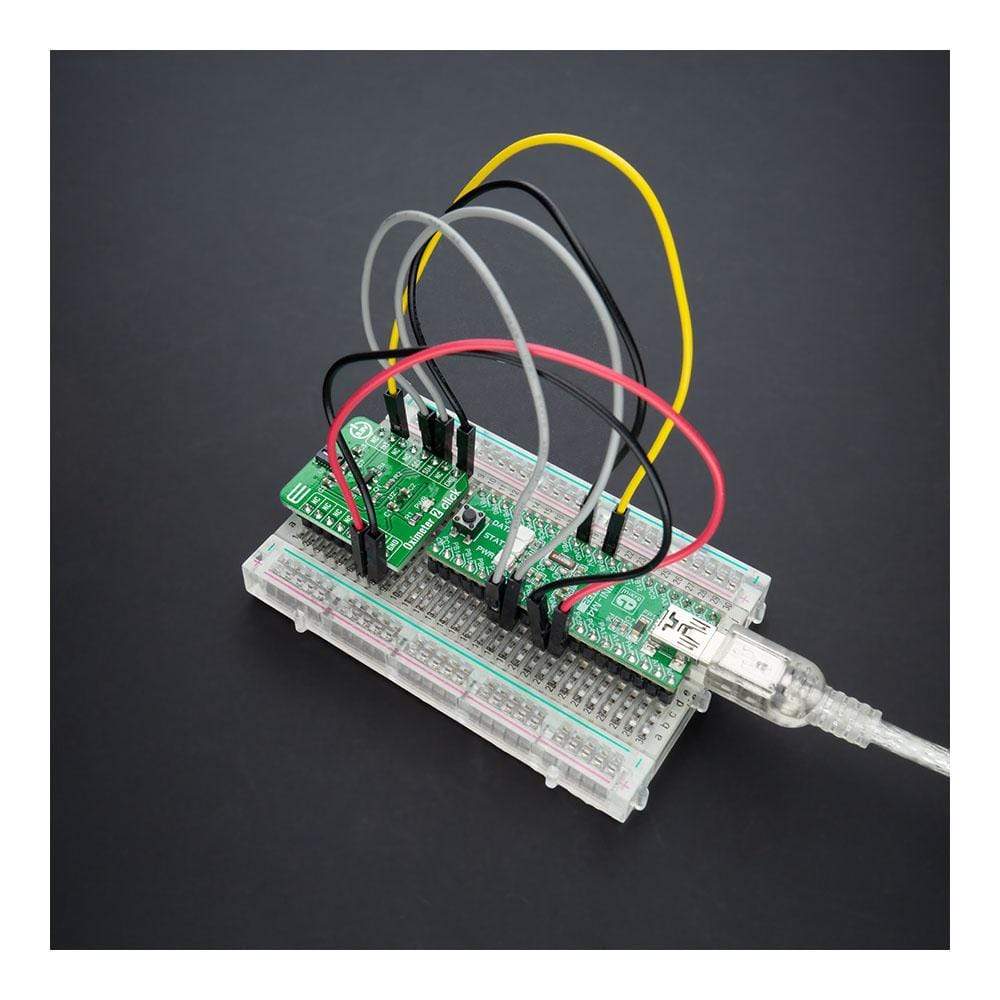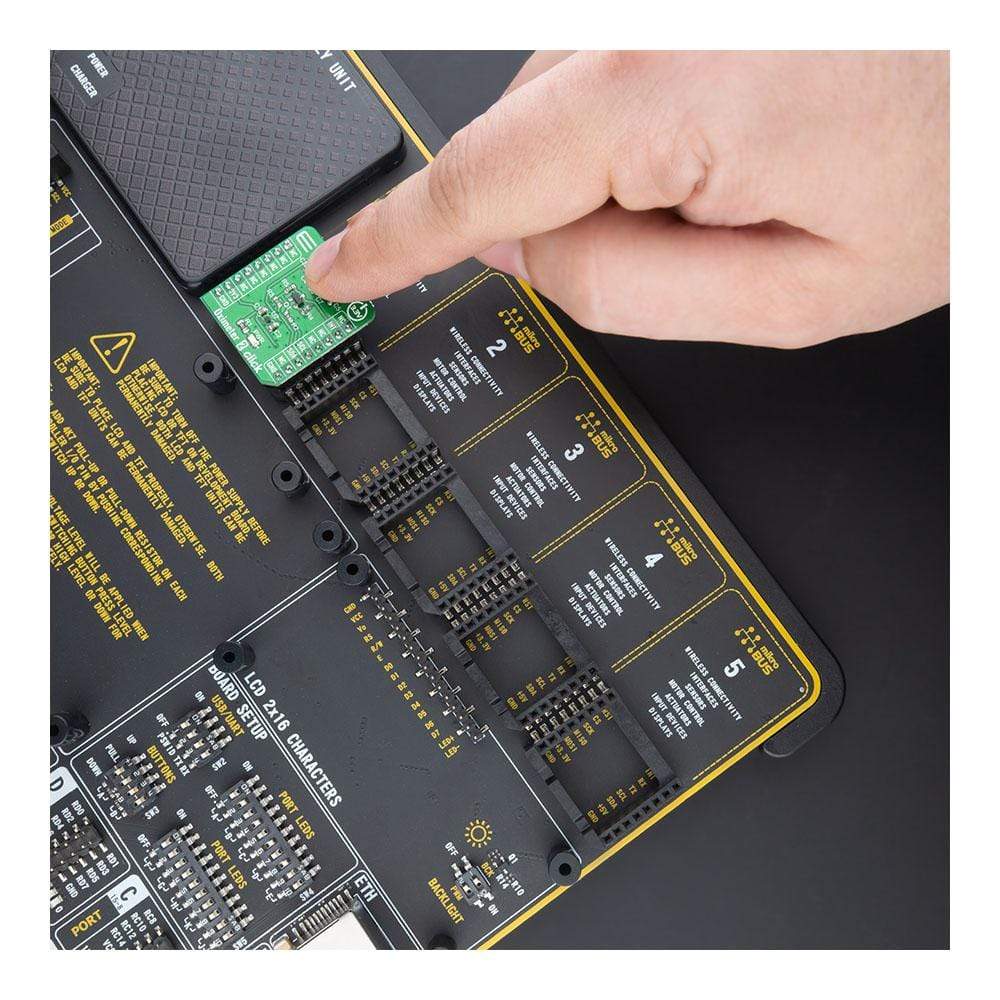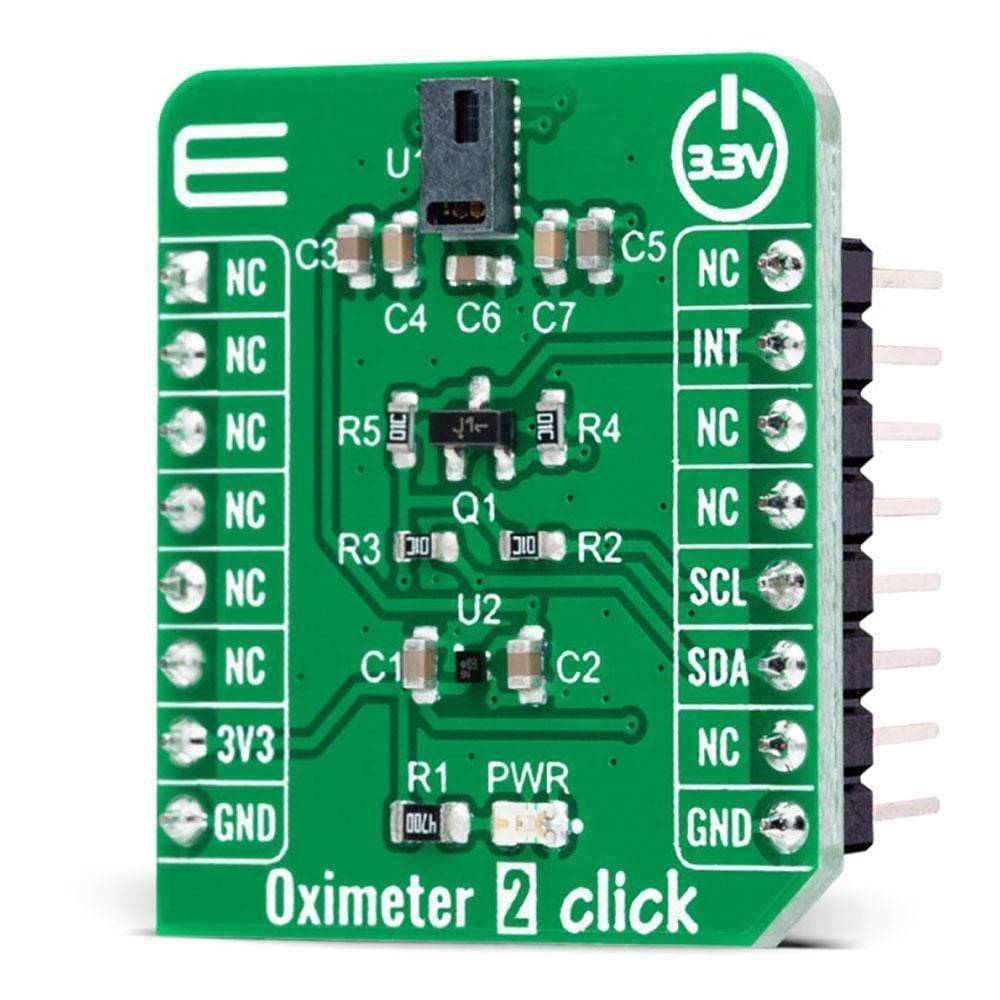
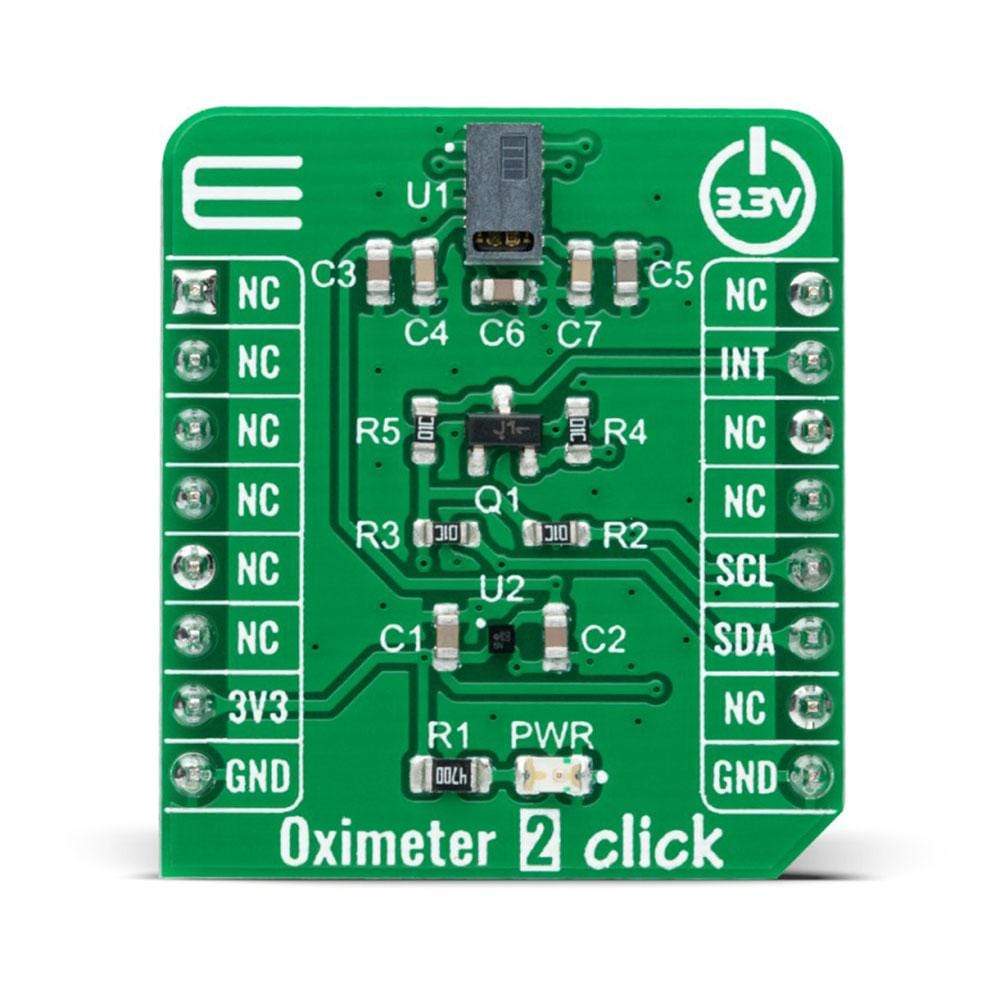
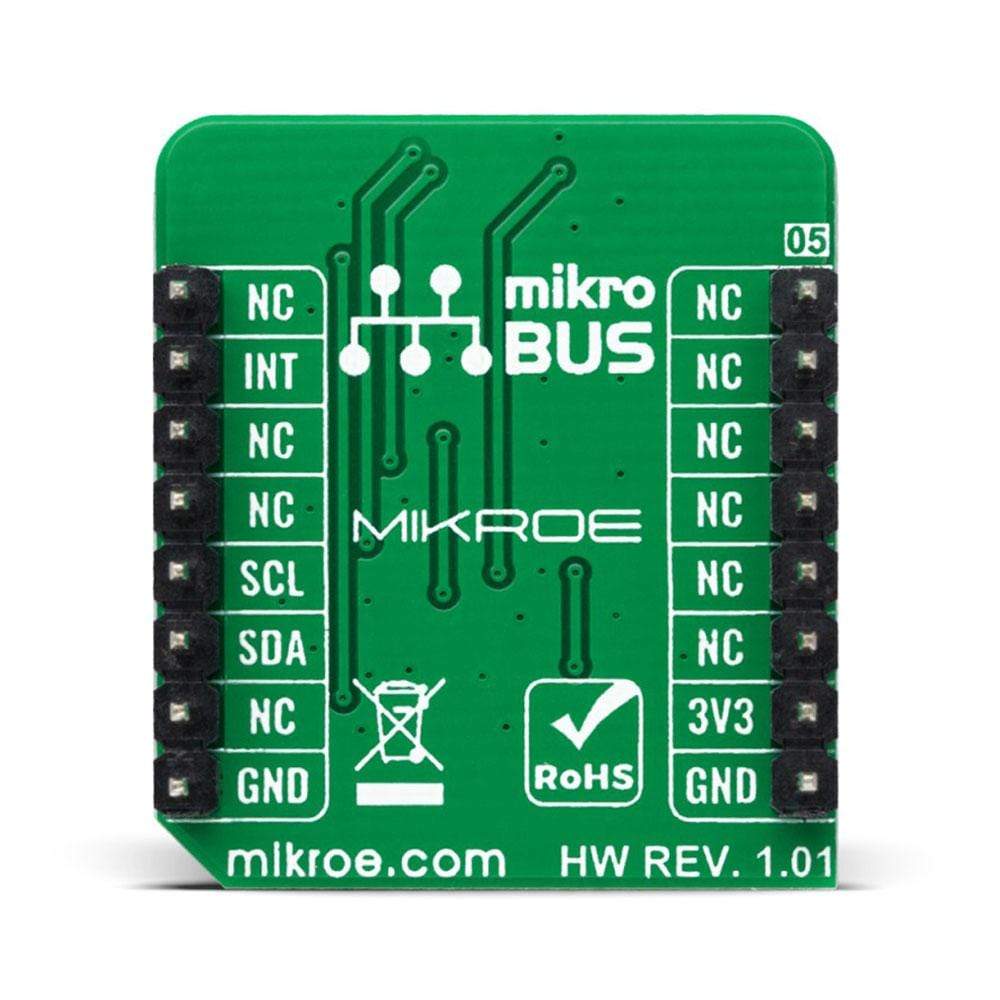
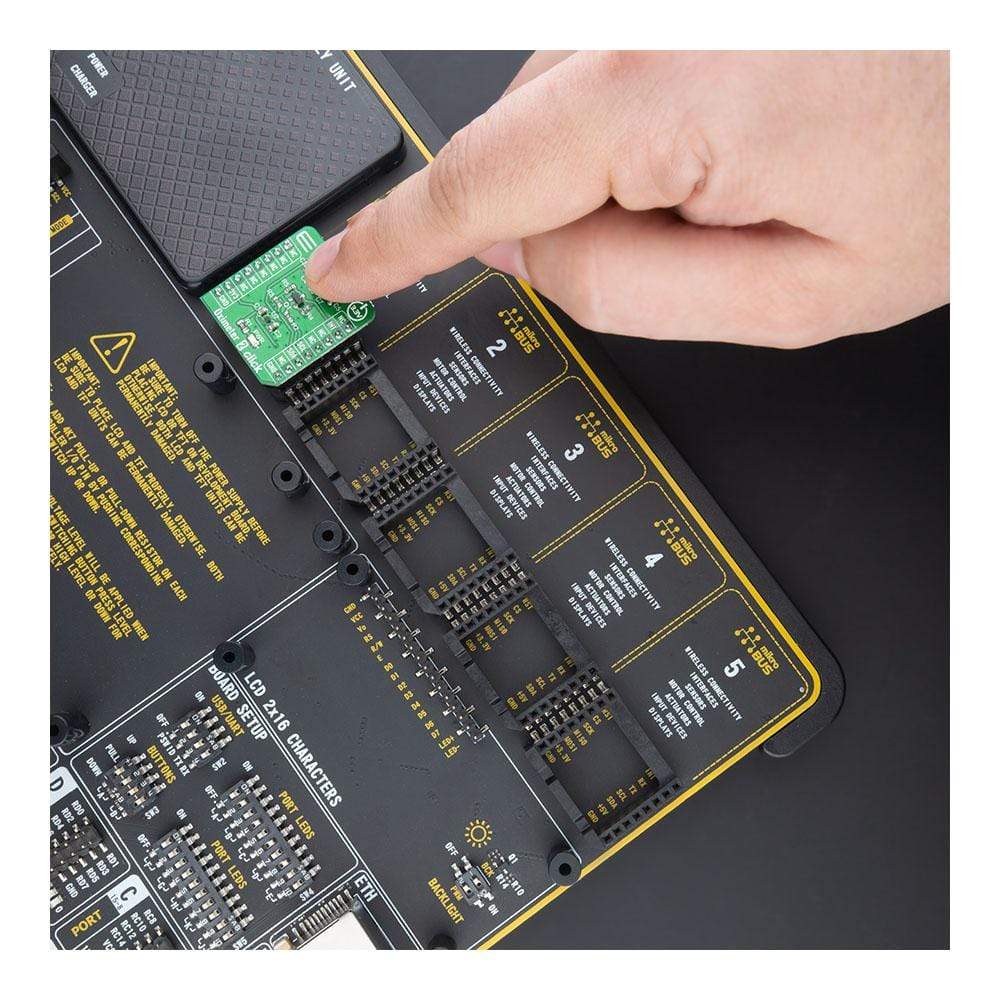
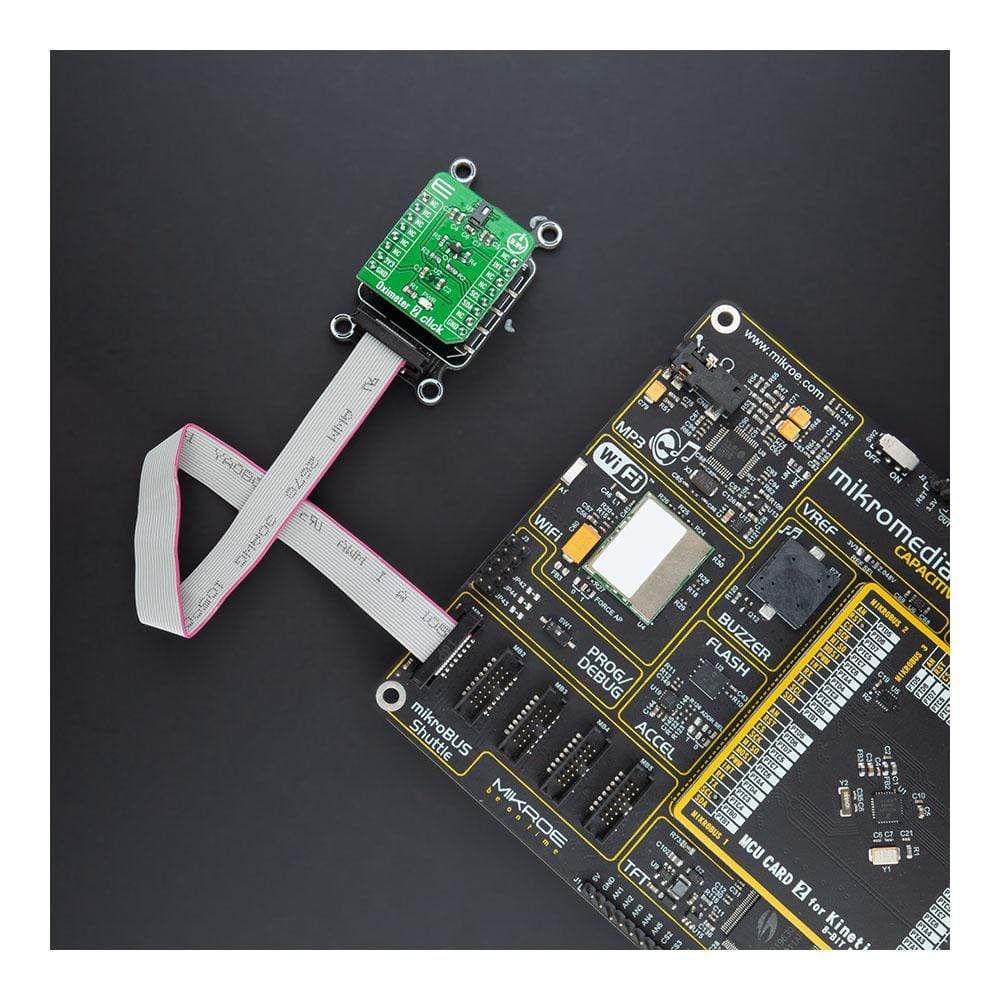
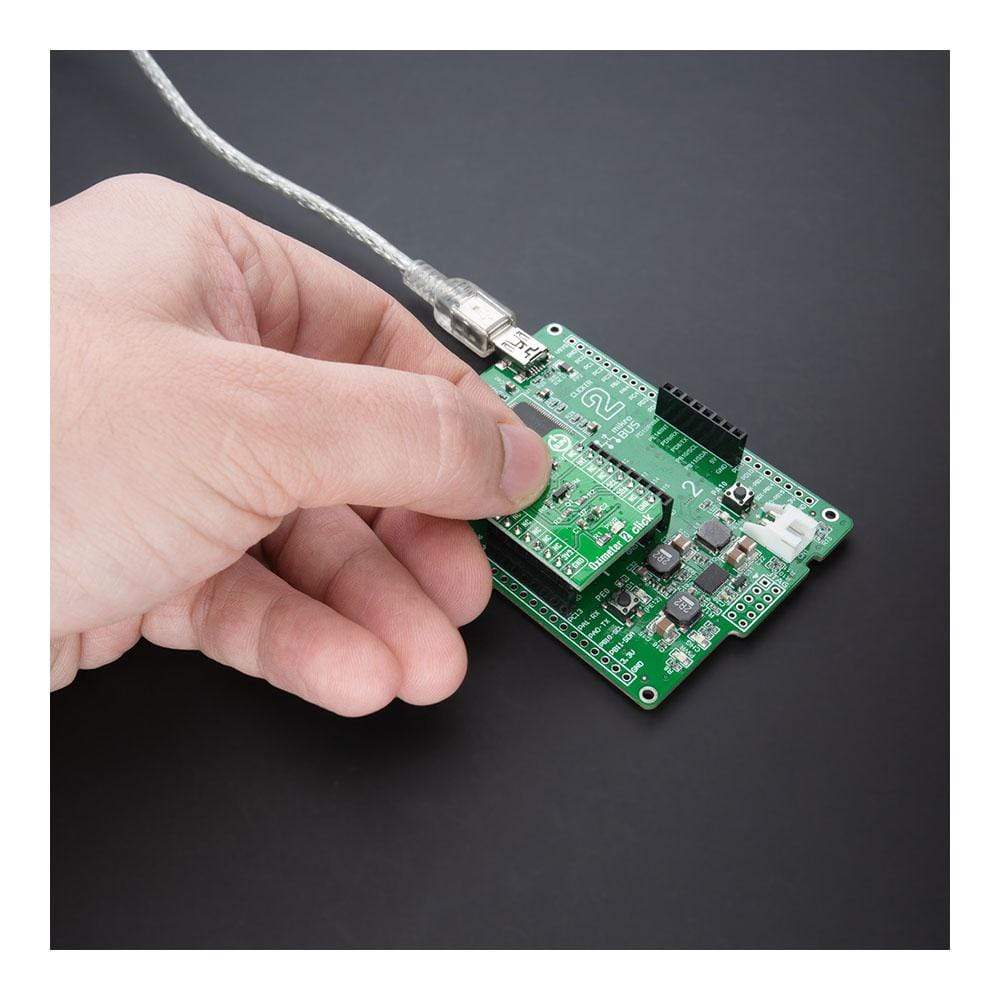
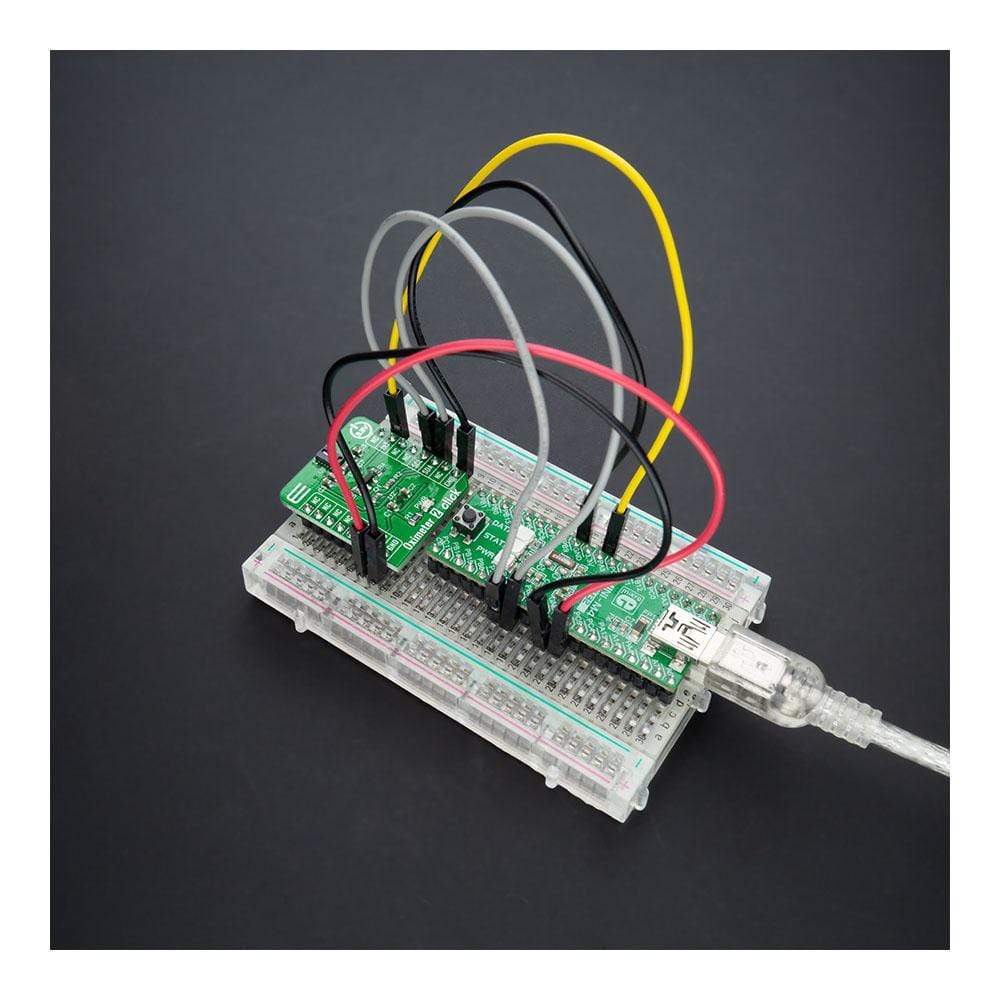
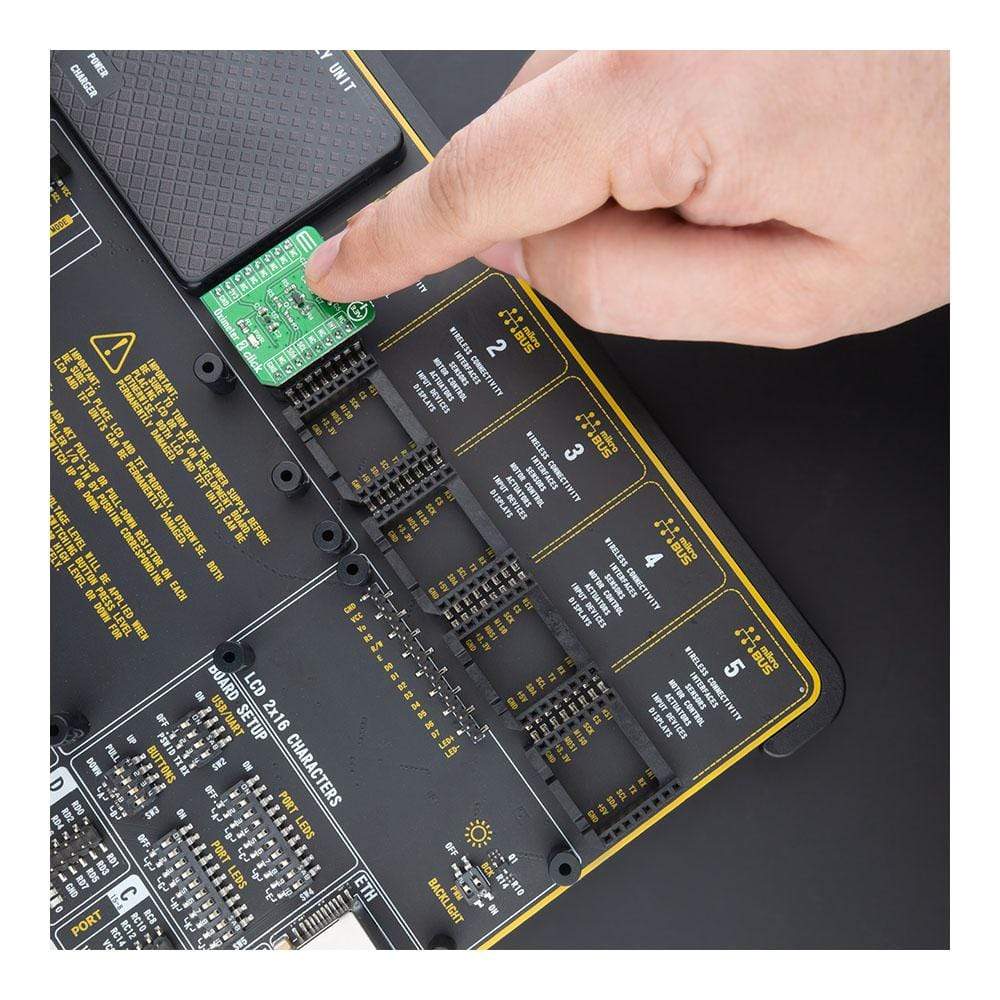
Overview
The Oximeter 2 Click Board™ is a compact add-on board suitable for measuring blood oxygen saturation. This board features the ADPD144RI, a PPG optical sensor for photoplethysmography detection of blood oxygenation from Analog Devices. It combines LED emitters and sensitive 4-channel photodiodes with a custom ASIC that provides optical isolation between the integrated LED emitters and the detection photodiodes to improve the signal-to-noise ratio (SNR). PPG detection of blood oxygenation is achieved by synchronous detection in red and infrared wavelengths. Synchronous measurement allows rejection of both DC and AC ambient light interference with low power consumption. This Click Board™ makes it an excellent choice for applications such as optical pulse oximetry and health monitoring.
The Oximeter 2 Click Board™ is supported by a mikroSDK compliant library, which includes functions that simplify software development. This Click Board™ comes as a fully tested product, ready to be used on a system equipped with the mikroBUS™ socket.
Downloads
Der Oximeter 2 Click Board™ ist eine kompakte Zusatzplatine, die sich zur Messung der Sauerstoffsättigung im Blut eignet. Diese Platine verfügt über den ADPD144RI, einen optischen PPG-Sensor zur photoplethysmographischen Erkennung der Sauerstoffsättigung im Blut von Analog Devices. Er kombiniert LED-Emitter und empfindliche 4-Kanal-Fotodioden mit einem benutzerdefinierten ASIC, der eine optische Isolierung zwischen den integrierten LED-Emittern und den Erkennungsfotodioden bietet, um das Signal-Rausch-Verhältnis (SNR) zu verbessern. Die PPG-Erkennung der Sauerstoffsättigung im Blut wird durch synchrone Erkennung in roten und infraroten Wellenlängen erreicht. Die synchrone Messung ermöglicht die Unterdrückung von Störungen durch Gleich- und Wechselstrom-Umgebungslicht bei geringem Stromverbrauch. Dieses Click Board™ ist eine ausgezeichnete Wahl für Anwendungen wie optische Pulsoximetrie und Gesundheitsüberwachung.
Das Oximeter 2 Click Board™ wird durch eine mikroSDK-kompatible Bibliothek unterstützt, die Funktionen enthält, die die Softwareentwicklung vereinfachen. Dieses Click Board™ wird als vollständig getestetes Produkt geliefert und ist bereit für den Einsatz auf einem System, das mit der mikroBUS™-Buchse ausgestattet ist.
| General Information | |
|---|---|
Part Number (SKU) |
MIKROE-4292
|
Manufacturer |
|
| Physical and Mechanical | |
Weight |
0.016 kg
|
| Other | |
Country of Origin |
|
HS Code Customs Tariff code
|
|
EAN |
8606027381744
|
Warranty |
|
Frequently Asked Questions
Have a Question?
Be the first to ask a question about this.

